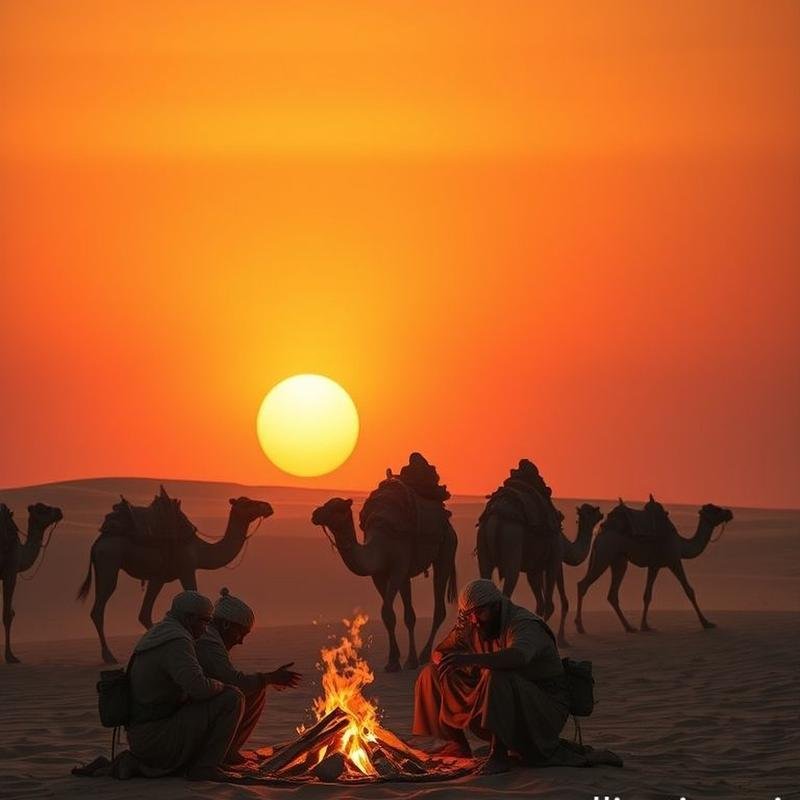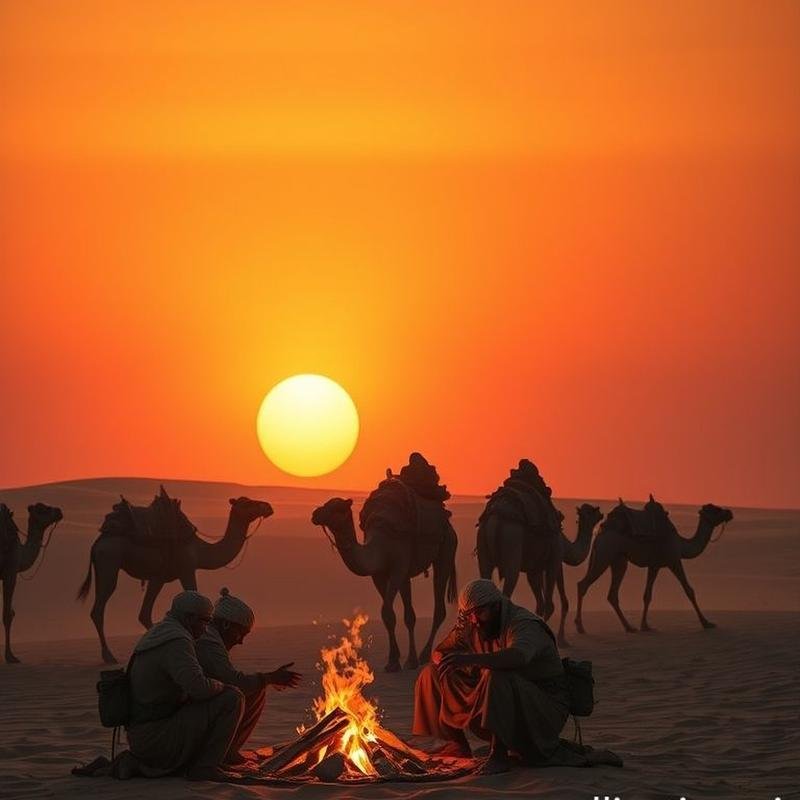The Frankincense Route: Unveiling the Secrets of Ancient Civilizational Decline?

Frankincense Route: Civilization’s Rise & Fall?
Could the ethereal smoke of incense carry the lament of fallen kingdoms? This documentary embarks on a historical exploration to reveal how the Incense Route, once a vital artery of commerce, became a stark reflection of civilizational fragility and decline. We will trace the vestiges of fading fragrances to examine how avarice and climatic shifts precipitated the collapse of societies that once believed themselves immortal.
Before we commence this investigation, we invite you to share your perspectives in the comments regarding the correlation between frankincense and the decline of civilizations. To unravel every facet of this intricate narrative, subscribe to our documentary channel.
The Economic and Spiritual Significance of Frankincense
But was frankincense simply an aromatic substance? Beyond the sacred scents ascending skyward lies a profound economic impact. In ancient Egypt, known as “anti,” it was an indispensable component of elaborate mummification rites and even discovered within Tutankhamun’s tomb, underscoring its inestimable value. Frankincense is referenced over twenty times in the Bible, highlighting its crucial role in diverse religious observances, from Judaism to Christianity. Beyond its spiritual significance, entire kingdoms, such as Hadhramaut in the southern Arabian Peninsula, prospered due to their strategic control over the frankincense trade, levying substantial taxes on caravans traversing their territories.
The Arteries of Civilization: The Ancient Incense Route
Furthermore, Greek and Roman physicians, including Pliny the Elder, extolled its numerous therapeutic properties, ranging from digestive ailments to wound healing. In the first century AD, Pliny unequivocally declared it more valuable than gold, acknowledging its extreme scarcity and the arduousness of its procurement. From the heart of Hadhramaut, where precious frankincense treasures were transported in majestic caravans, emerged the arteries of civilization – the ancient Incense Route. Originating in Dhofar, Oman, the source of the finest frankincense, and traversing Hadhramaut, Yemen, the routes branched out like vital veins across the vast Arabian Peninsula, extending north towards Petra and onward to Gaza, the gateway to the Mediterranean world. This was a perilous undertaking, requiring sixty to ninety days to transport a single consignment of this precious aromatic commodity.
Frankincense: Liquid Gold and Economic Power
Frankincense was not merely incense to be burned; it was liquid gold, a potent economic force. Its value rivaled, and at times surpassed, that of gold, serving as a tremendous economic engine that transformed the ancient world. The Nabataean kingdom, renowned for its wisdom and political acumen, controlled a significant portion of this vital route, imposing exorbitant taxes on passing caravans, thereby enriching its treasury and amplifying its growing influence. Thousands of tons traversed this route annually, illuminating the temples of ancient Egypt, where Herodotus himself witnessed its use in solemn religious rituals, a precious offering to the gods.
The Winds of Change: Decline and Collapse
However, even the most prosperous routes are not immutable. By the third century AD, the winds of change began to buffet the Roman Empire, a power with an insatiable appetite for incense. A severe economic and political crisis curtailed demand for this luxury product, and fissures began to appear in its seemingly unshakeable foundations. In the sixth century, the bubonic plague ravaged Europe and the Middle East, claiming countless lives and paralyzing essential trade. Subsequently, in the seventh century, the rise of Islam emerged as a transformative force, reshaping global trade routes and controlling land and sea passages, gradually constricting the historic Incense Route. Compelling studies indicate that significant climate changes in the southern Arabian Peninsula led to a reduction in the production of frankincense trees, substantially impacting supply and causing significant losses for traders and farmers. By the fifteenth century, cities along the Incense Route, such as Shabwa and Marib, had become abandoned ghost towns, silent testaments to the demise of a golden age. In 1513, the Portuguese seized Socotra, a strategically vital island, severing the last lifeline of traditional Arab trade.
Echoes in the Sands: Evidence of Decline
Echoes in the Sands. Here, in the ancient city of Shihr in Dhofar, the chapters of this tragic denouement are revealed. A sudden economic surge occurred in the first century AD, followed by a rapid abandonment by the sixth century, suggesting a profound economic shift that afflicted the region. In Khor Rori, excavations reveal a gradual cessation of imports of luxury goods from the Mediterranean basin, compelling evidence clearly indicating the decline of trade that had sustained these lands for centuries. Further afield, in the lands of the Hadhramaut kingdom, historical documents reveal internecine conflicts and acrimonious disputes over water and pasture in the fourth and fifth centuries, an echo of the debilitating environmental and economic pressures that plagued the region. Pollen analysis reveals a disconcerting and consistent decline in vegetation cover, as fertile agricultural land transformed into barren desert. Near Marib, a mass grave tells another story, a tragic tale of severe malnutrition and widespread violence, a complete societal breakdown reflecting a profound social and political collapse. Even coinage bears witness to this abrupt disruption, with a sharp decline in the circulation of Roman and Greek currencies.
A Cascade of Consequences
As the desert sands engulfed the last vestiges of Marib, the collapse of the frankincense trade unleashed devastating repercussions across the ancient world. In the southern Arabian Peninsula, where the scent of incense once signified prosperity and affluence, kingdoms descended into abject poverty. Hadhramaut, which relied on frankincense for a staggering 90% of its economy, witnessed its coffers depleted at an alarming rate, as if hemorrhaging to death. The deterioration of the Sabaean kingdom, and at its heart the Great Marib Dam, was not merely a devastating engineering loss, but a symbol of complete social and economic collapse, a true catastrophe. As the importance of frankincense in religious and cultural rituals diminished, demand for it plummeted, and fertile lands, which once yielded abundance, transformed into barren, lifeless deserts. Desperate tribal migrations, in search of water and pasture, irrevocably altered the map of the region, igniting tribal conflicts and devastating civil wars. This was not merely an unfortunate economic downturn; it was a radical and painful transformation in the social and religious fabric of the region. With dwindling fortunes and fading hopes, exhausted societies began to seek new beliefs, alternative means of survival in this harsh world. Robust social networks, once a source of strength, began to fracture under the weight of increasing despair. As we contemplate these profound transformations, we arrive at the core of the harsh environmental realities that contributed significantly to this tragic collapse.
Environmental Degradation and Climate Change
The degradation of the seasonal rainforests in southern Arabia led to a catastrophic reduction in rainfall. Frankincense trees suffered severely from this devastating drought. Between the third and sixth centuries AD, the region experienced prolonged periods of drought unprecedented in history, leading to a sharp and tragic decline in the production of frankincense, the vital economic artery upon which civilizations depended. Contemporary studies indicate that the rise in the temperature of the Indian Ocean led to a radical alteration in monsoon patterns, significantly reducing the essential rainfall that once nourished frankincense-growing areas. Destructive overgrazing by livestock led to the degradation of valuable soil surrounding frankincense trees, hindering their growth and ability to produce precious resin. Wars and internecine tribal conflicts disrupted vital trade routes and destroyed fragile agricultural infrastructure, exacerbating the devastating effects of environmental changes. The significant decline in frankincense production led to a skyrocketing of prices, rendering it an expensive and unattractive commodity for traders and consumers alike. This devastating economic collapse left civilizations that were entirely dependent on frankincense on the precipice of ruin.
Shifting Power Dynamics and Trade Route Disruptions
As frankincense trees declined, the winds of change swept across trade routes, carrying with them the seeds of chaos and instability. Environmental degradation was not the sole harbinger of doom; power itself was undergoing alarming shifts. In the third century AD, violent upheavals shook the Hadhramaut kingdom, disrupting the flow of precious goods. Centuries later, in 525 AD, the Abyssinians invaded Yemen, plunging the region into bloody conflicts. Imagine those caravans heading north, laden with frankincense, traversing these turbulent lands, threatened with looting and destruction at every turn. Then came the collapse of the legendary Marib Dam, a disaster that led to mass migration and catastrophic economic decline, obliterating the control of the mighty Sabaean kingdom over trade routes. With the advent of the seventh century AD, the armies of Islam invaded the region, forever altering the balance of power. Shabwa and Marib, cities that had flourished thanks to frankincense, began to wane, while centers of power shifted elsewhere. In the tenth century AD, bitter conflicts between warring emirates disrupted trade and significantly increased risks. Can we fault traders for their desperate search for alternative, safer, and more profitable routes?
The Rise of Alternative Trade Routes and the Roman Empire
With the rise of the Roman Empire, the patterns of trade began to evolve. By the first century AD, Rome was no longer beholden to the ancient Incense Route. Alternative sea routes, across the Red Sea to India, opened up broader avenues, circumventing the control of the southern Arabian kingdoms. Although Rome’s attempt to control the sources of frankincense in Yemen, led by Aelius Gallus, failed, it demonstrated the empire’s determination to break the trade monopoly. The discovery of the monsoon winds enabled Roman ships to sail directly to India, shortening the long and costly land journey across Arabia. Alexandria, under Roman rule, became a global trading hub, receiving goods from the East and distributing them throughout the empire. High Roman taxes on frankincense increased its cost, reducing its appeal compared to other alternatives. With Rome’s conversion to Christianity in the fourth century AD, demand for frankincense in religious rituals declined, permanently altering the balance of power.
A Warning from the Past. Lessons for the Present.
The decline of the frankincense trade is not merely a transient economic collapse; it is a microcosm of the existential challenges confronting our world today. Just as the decline in demand for frankincense weakened the thrones of the southern kingdoms, our over-reliance on oil threatens our fragile economic stability, especially








